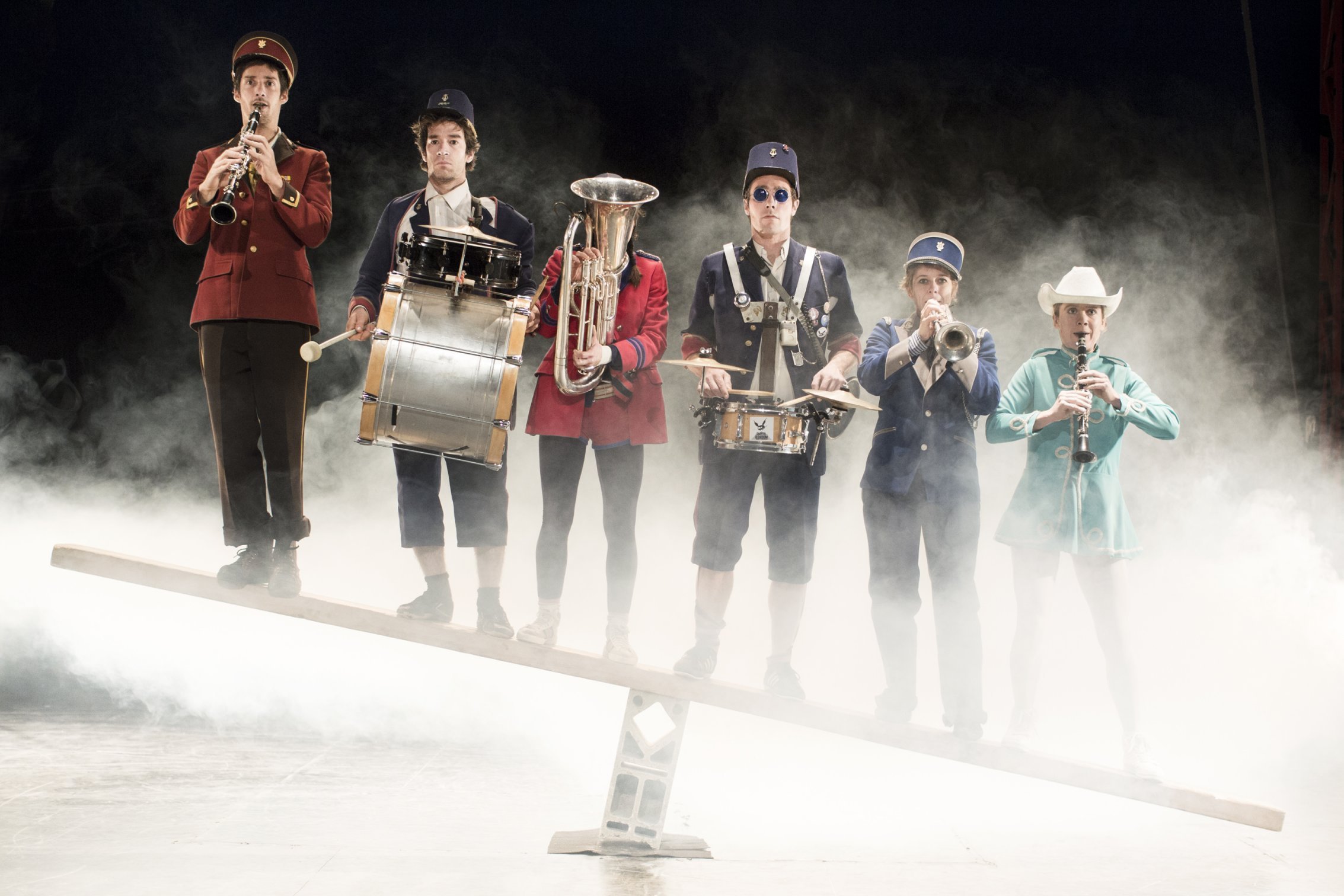
Circa Tsuica in Opus 7
Photo: Vincent Beaume
Selling circus
When audiences for her contemporary circus tours stagnated, Rachel Clare of Crying Out Loud realised a fresh approach was needed. She reveals how Circus Evolution has revolutionised circus marketing.
It is difficult to develop audiences for circus when programming is on a one-off, season-by-season basis. At Crying Out Loud, we have worked across many platforms on varying scales since the company was founded in 2002 – from the higher-profile festivals like Manchester International Festival, LIFT and Brighton Festival, to the smaller-scale house circuit in the south east of England. But while audiences and venues were consistently enthusiastic about the specific tours, we didn’t see a year-on-year rise in audiences in the majority of theatres.
So, in 2013, to tackle this ad hoc method, we set up Circus Evolution: a UK-wide strategic partnership of regional venues to develop audiences for contemporary circus. Supported by Arts Council England’s Strategic touring programming, we are about to tour our fifth work, and have plans in place for a further three over the next two years. In this five-year period we will have made multiple visits to the various Circus Evolution venues, each time with a bespoke marketing campaign aimed at diversifying audiences.
We started by commissioning research from the Audience Agency to test our conventional methods of touring and marketing the contemporary shows. In focus groups we interviewed over 500 people who hadn’t seen contemporary circus before, seeking their reactions to our marketing tools. The response was illuminating. We needed to revise how to position and sell the shows. Our challenge was to present this diverse work to audiences who didn’t think it was their cup of tea.
We identified a number of key issues: the term ‘contemporary circus’ doesn’t adequately describe current practice, which incorporates different artforms and often blurs the boundaries of dance and visual theatre. So not surprisingly, there was a lack of understanding from the general public in what they believe contemporary circus to be and what it is in reality. Our emphasis needed to be on clear copy and a strong use of imagery. We discovered that audiences are more willing to try circus once they have seen a trailer, when they know what a show is about and what experience to expect.
We now use existing promotional channels but have also extended their range. We saturate specific postcode sectors chosen by the venues as significant in their audience development plans. We employ ambassadors to knock on doors distributing print and talking to local residents about the show. Activities, including assembly talks, book readings and displays, also take place at local schools and libraries within these postcodes.
Circus Evolution brings together programming and marketing departments at the early stages to build a cohesive campaign bespoke to each venue’s needs. Training courses, webinars and ‘go see’ trips are an important part of the process. Jackie Friend, our Marketing and Audience Development Manager, visits each venue to have face-to-face marketing planning meetings for each show to ensure clear parameters and an understanding of the artists’ work as she steers the campaign. As we approach the fifth tour, we can see shifts in audience figures, momentum is building and we are beginning to see results.
Involving local artists and locations has proved to be a successful tool for increasing engagement. Bespoke trailers for Barely Methodical Troupe’s ‘Bromance’ made for the New Wolsey Theatre in Ipswich (watch below) and Warwick Arts Centre both went viral locally as the towns’ stations, landmarks and high-profile local people played an essential part in the films. The venues were delighted with the number of views and there was clear evidence that the trailers drove ticket sales.
Another example of involving local communities is our next project, Circa Tsuica’s ‘Opus 7’, which combines circus and brass bands. The company has begun working with local brass bands in seven out of the nine tour venues, preparing them to be part of the show touring in February and March. The bands will be cleverly woven into the live performance under the artistic direction of the company and its musical director.
When we started out in 2002, there was little infrastructure for contemporary circus in the UK. Unlike our colleagues in the dance sector who have support from dance development agencies, there is no similar structure for circus. Three of the Circus Evolution partners (Déda in Derby, SeaChange Arts in Great Yarmouth and Pontio in Bangor) are in the process of expanding their facilities and provision for circus – an exciting indication of what is possible.
The legacy of Circus Evolution will build both confidence and curiosity for audiences and programmers alike. And for artists the climate is also beginning to change – as they tour, their needs are being understood by venues. We encourage residencies and the free use of spaces in venues’ downtime, and as a result direct relationships between artists and venues are flourishing.
Rachel Clare is Artistic Director of Crying Out Loud.
cryingoutloud.org
The venues involved in Circus Evolution are the Lawrence Batley Theatre in Huddersfield, The Civic in Barnsley, The Lowry in Salford, Pontio in Bangor, Déda in Derby, Warwick Arts Centre, the New Wolsey Theatre in Ipswich, St George's in Great Yarmouth, Oxford Playhouse, the Hat Factory in Luton and the Lighthouse in Poole.
Join the Discussion
You must be logged in to post a comment.